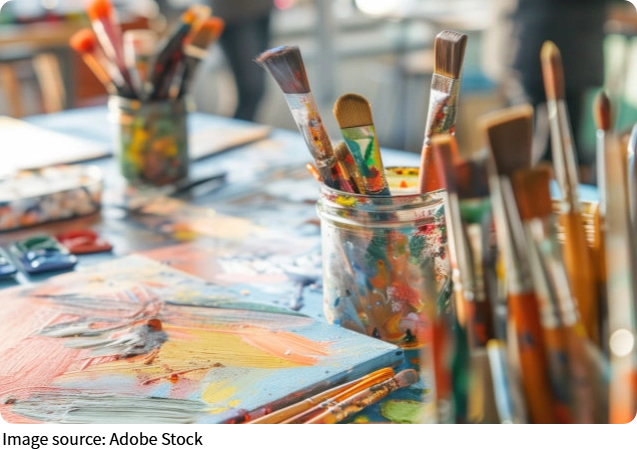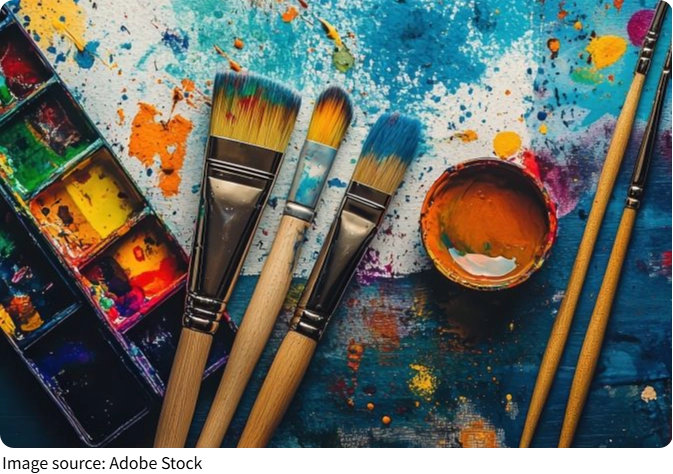Artists Express Themselves

We often hear that art reflects the artist—but what does that really mean? When we look at a painting, a sculpture, or even a digital piece, we're not just seeing colors or shapes.
We're actually seeing a part of someone's mind, feelings, and point of view. For centuries, artists have used their work to say what they couldn't put into words. And even today, creative expression helps us explore our inner world and share it with others.
Da Vinci: Blending Science and Soul
Leonardo da Vinci wasn't just a painter—he was a thinker, a scientist, and a dreamer. In his art, he combined logic with imagination. Just take a look at The Last Supper or Mona Lisa. The way he used light, emotion, and detail shows a mind full of curiosity. Da Vinci used notebooks to sketch everything from human muscles to flying machines, blending his interests into one vision. Through his work, we see a man fascinated by life itself.
Picasso: Emotion Through Abstraction
Jump forward a few hundred years, and we meet Pablo Picasso—a totally different kind of artist. His early work was realistic, but he soon broke away from tradition. Picasso used bold shapes and strange angles to show emotions in ways that had never been seen before.
For example, his painting Les Demoiselles d'Avignon shocked the art world with its sharp lines and non-traditional beauty. Later, during his "Blue Period," he painted sadness and loneliness in deep, cool tones. Through every phase, Picasso told his story using form, not just faces.
Every Style Tells a Personal Story
What's amazing is that each artist finds their own way to speak. Van Gogh painted with wild brushstrokes and intense colors because that's how he felt inside—chaotic, passionate, and full of emotion. On the other hand, someone like Claude Monet painted the same garden over and over to capture the subtle feelings of time passing and nature changing. No two artists are the same, and that's what makes their self-expression so powerful.
Modern Artists Are Doing It Too
Even today, artists continue to use their personal stories in their work—just in new ways. We now see artists using digital tools, video, and even performance to show who they are. For example, some create online galleries about their daily life struggles or personal growth. Others combine different art forms, like painting with music, to better express complex emotions. The tools have changed, but the purpose remains the same: to express something real.
We Can Express Ourselves Too
We don't have to be world-famous painters to express who we are. Whether it's doodling in a notebook, writing a short poem, or snapping a photo with meaning, we're all capable of using art to tell our own stories. Sometimes, just making something—anything—can help us understand ourselves better. And when we share it, someone else might feel seen, too.

Final Thoughts: What Would You Create?
Looking at the works of Da Vinci or Picasso reminds us that every person sees the world differently—and that's a good thing. These artists turned their thoughts and emotions into lasting works that still move us today. So Lykkers, if you were to create something that speaks for your life right now, what would it look like? A drawing? A song? A photo? Don't worry about making it perfect. Just let it be you.
We're all artists in our own way. The question is—are we brave enough to let the world see what we truly feel?
-
 Action Shot SecretsWant to freeze high-speed motion with drama and clarity? Here’s how we can take sports photos that truly capture the energy!
Action Shot SecretsWant to freeze high-speed motion with drama and clarity? Here’s how we can take sports photos that truly capture the energy! -
 Black & White MagicWhat makes black and white photography so timeless and artistic?
Black & White MagicWhat makes black and white photography so timeless and artistic? -
 Music and MindHow music powerfully shifts our mood, clears our mind, and lifts our spirit anytime, anywhere.
Music and MindHow music powerfully shifts our mood, clears our mind, and lifts our spirit anytime, anywhere.